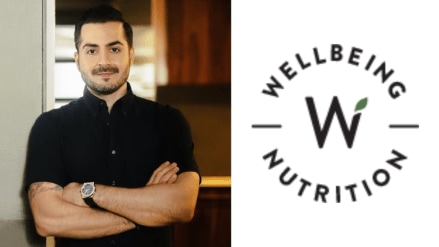At a time when India’s nutraceutical market is flooded with commoditised supplements and influencer-led brands, Wellbeing Nutrition is anchoring its growth on a science-first strategy and clean-label philosophy.
Founded by Avnish Chhabria, the company began operations in January 2020 after nearly five years of R&D, including research conducted in collaboration with a team of scientists at Johns Hopkins University. The brand manufactures and markets natural supplements made from organic and plant-based ingredients. Their products, ranging from oral melts and effervescent tablets to marine collagen and vegan proteins, claim to support everyday health needs like energy, sleep, digestion, skin, and immunity.
“I actually sponsored the nutrition wing there for almost a year and a half, working alongside six scientists and about thirteen understudies,” Chhabria told financialexpress.com. “The goal was simple: to truly understand Nutrition Technology, explore different delivery formats, dispensing methods, and dive deep into plant-based extracts and microsomes that could work for the Indian market.”
The brand launched with effervescent tablets, a format Chhabria claims had seen no innovation in the Indian market for over a decade. It has since expanded into 20 formats, including oral thin strips, which the company says now lead globally in adoption. “These are dissolvable strips you place on your tongue. Most tablets and capsules lose about 60% of their efficacy in the stomach due to bile and acid. But oral thin strips avoid that,” he said.
According to media reports, Wellbeing Nutrition closed FY25 with a revenue of Rs 140 crore, marking a 95% increase from Rs 71.96 crore in FY24. The company expects to achieve EBITDA profitability in the January–March 2025 quarter by reducing its annual expenditure to Rs 78–80 crore from Rs 104 crore the previous year. It is targeting Rs 290–300 crore this year. “We are CMT positive, we’re on track to become fully EBITDA positive starting next quarter,” Chhabria said, adding that the brand is currently operating at an annual revenue run rate of Rs 210–220 crore.
Around 80% of the company’s revenue is generated from online sales, with the remaining 20% from offline retail across 5,500 stores and partnerships with chains such as Apollo, Guardian, and Nature’s Basket. Exports currently contribute 5–7% of the business, with a presence in the US (Walmart and Amazon), the GCC (2,500 stores), and Europe.
Product development is guided by a three-pronged approach: insights from 450 doctors and hospitals across India, digital trends, and consumer feedback. “We recently launched an Oral Thin Strip for acidity relief based on strong consumer feedback that existing options like Eno or jellies were inconvenient for on-the-go relief,” he said.
Wellbeing Nutrition positions itself in what Chhabria terms the “prestige” segment, distinct from mass or masstige offerings. “We do not rely on commoditised or generic raw materials. Instead, we source premium, globally respected ingredients,” he noted, citing patented compounds such as KSM-66 Ashwagandha and Velociti™ from the US.
While metros and tier-1 cities remain the largest contributors to sales, demand from tier-2 and tier-3 cities now accounts for around 30% of the business. “Our strategy isn’t about mass regionalisation, it’s about targeted availability in the top retail doors of each city,” Chhabria said, adding that the brand is also experimenting with quick commerce via a partnership with Zepto.
Addressing growing scrutiny around misleading claims in the wellness industry, Chhabria said, “The frustration you see on social media is justified, many so-called studies are unregistered, trial data unvalidated. When we sell products like marine collagen or collagen peptides, every claim is backed by clinical studies that are fully transparent and accessible.”
In a category seeing new entrants from legacy brands like Tata Consumer and Himalaya, Chhabria believes Wellbeing Nutrition’s edge lies in its agility and consumer-first product development. “Big players often spend years on a single research protocol. In contrast, we stay ahead of the innovation curve.”
As of now, exports are expected to reach Rs 30–35 crore this year and double annually over the next few years. The company also boasts a 43% repeat purchase rate, with average order values around Rs2,500. “This combination of high repeat rates and strong AOVs has helped us achieve CMC positivity across all channels,” Chhabria noted.
Marketing accounts for 30–35% of revenue, spanning offline events, quick commerce trials, and partnerships with cafés and salad bars. While digital remains key, the brand is shifting toward in-clinic partnerships with doctors and dermatologists. “We collaborate extensively with these KOLs. While we remain heavily reliant on these digital channels, we are gradually reducing that dependence,” he said.
